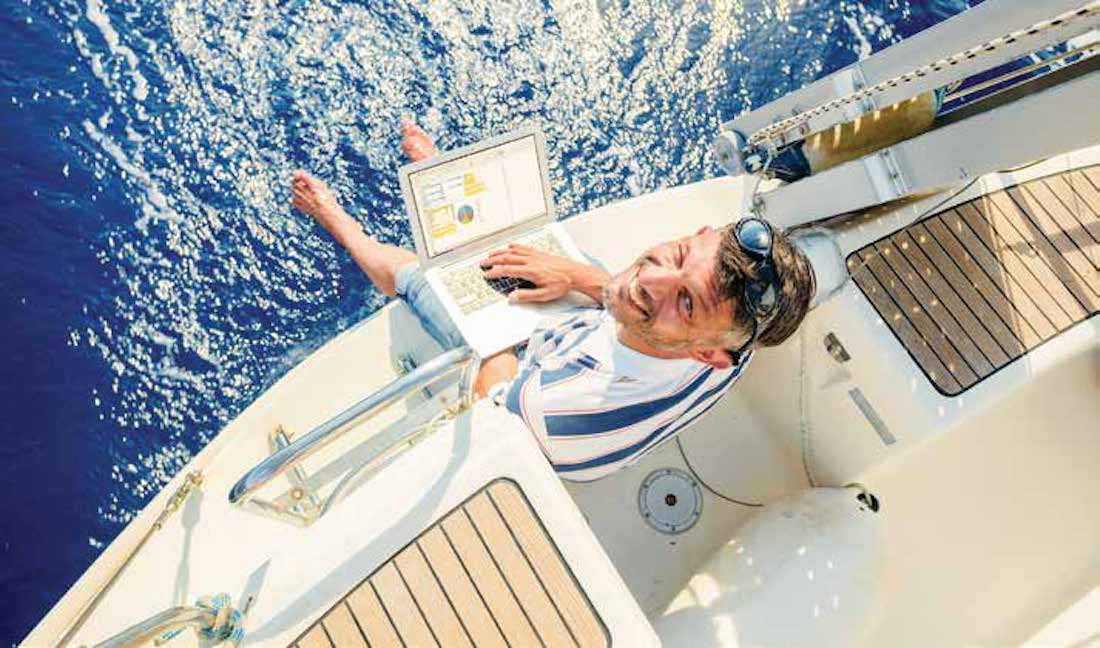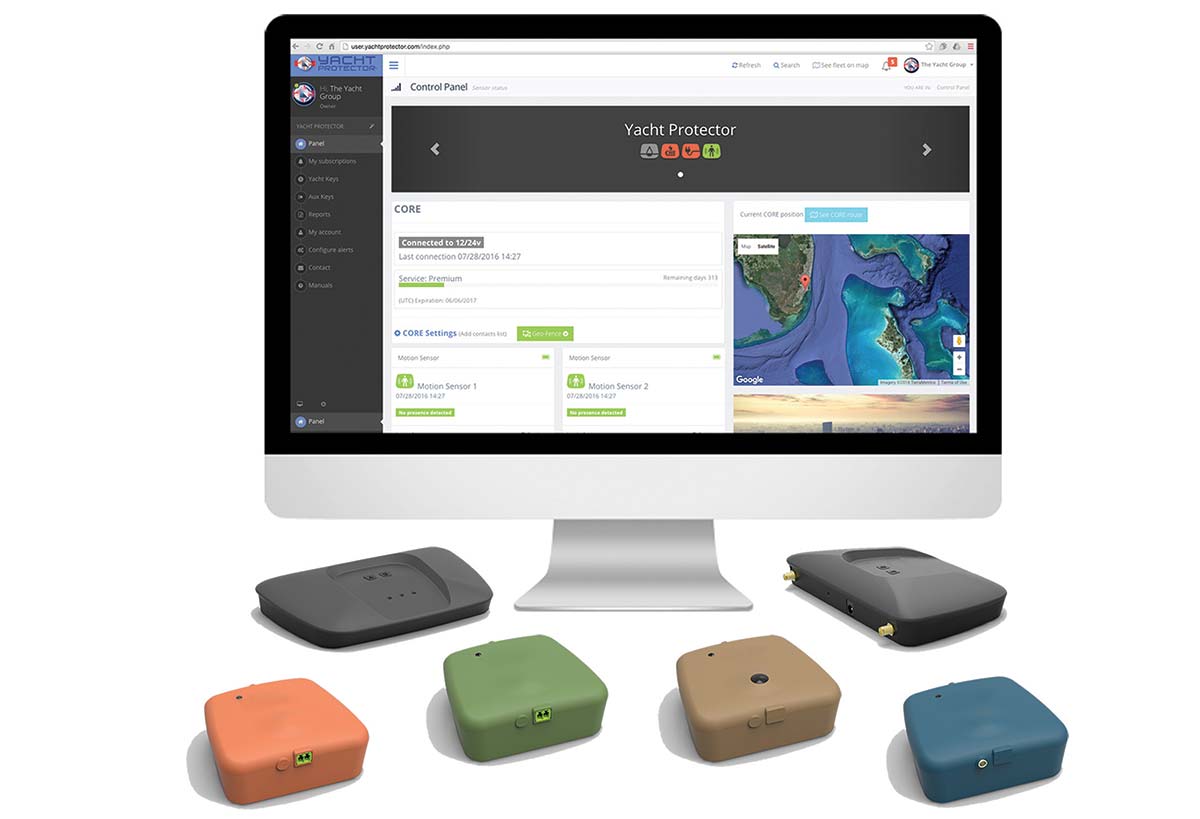Linked In: stay connected while cruising with a powerful Internet connection with a boat-mounted system and always have internet on your boat.
Boat owners are usually always on the move—it’s not uncommon to go from vessel to home or remote retreat in a week or less. No matter the location, most people on the go want to be connected to the Internet, and that’s where a reliable Wi-Fi system for your boat comes in. Now, you can stay connected and always gave Internet on your boat.
It’s not enough to just turn on your computer and tap into a signal. Today’s cruisers want powerful coverage not only for their laptops but also for guests’ devices, including cell
phones and tablets. In addition, Smart TVs need Wi-Fi to use streaming services such as Netflix. However, when you move from your home or office to the boat, the experience changes and usually for the worse.
Global Marine Networks
Global Marine Networks (GMN) offers a system that solves that problem. The Halo Long-Range Wi-Fi Extender contains everything you need to get going except the final mount,
which depends on how you want to mount it to your boat. The complete system includes the long-range antenna that connects to the remote hotspot, a local Optimizer access point that everyone connects to on the vessel, 32 to 100 feet of cable, and a stainless-steel connector that works with any 14 TPI, one-inch-wide mount.
“When connecting to high-powered shoreside antennas, customers will get usable speeds up to seven miles away in ideal conditions,” said John Dark, vice president of sales and
marketing for GMN, who noted the Halo retails for $449.
“While most marina hotspots aren’t that strong, what really matters is whether you can connect at the end of the dock or when anchored offshore. That’s where most people report they want a connection, and those extra 100 or 200 yards make all the difference.”

Today’s customers want to stay connected while cruising to watch Netflix or use communication systems like Skype; the Halo can help the user get the best possible connection from the Wi-Fi source. “Halo will give you the maximum possible speed [depending on] the speed of the hotspot you’re connecting to and the distance you are from it,” Dark explained. “In most cases, this means that you’re connecting faster and more reliably than without the Halo. If the hotspot that you connect to is fast but just too far away for your device, Halo can make a tremendous difference. What no antenna system can do is make the remote hotspot any faster than it is if you’re standing right next to it.”
Netflix and Chill
Netflix, for example, states on its website that a 1.5-megabits-per-second download speed connection is recommended, and 5 megabits is suggested for HD-quality video viewing. “Upload/download speeds depend completely upon the speed of what you’re connecting to,” Dark said. “There are no real maintenance issues, and all the components of the kit are designed or modified to be in the harsh marine environment.”
Customers with only a smartphone, iPhone or iPad will have no trouble joining a network. They simply connect devices to the local Wi-Fi router that’s included with the Halo. When moving from one location to another, the smartphone will link to the new remote network. “We are currently developing an app that will make it even easier for customers
to set up and use the Halo,” Dark said.
Many cruisers have Internet needs both near shore and offshore. When near shore, most customers connect to marina Wi-Fi. However, offshore there are a few options if you want Internet on your boat. Halo will accept many cellular USB modems, which will usually work a mile or two offshore. After this, customers tend to use Global Marine Networks’ recommended cellular booster kit, which can work up to 20 miles offshore. Beyond that, a satellite is the only alternative.
It is what it is
Satellite systems are a mainstay of Global Marine Networks’ product offerings but are pricier than the Halo. Dark said the least expensive way to have any connectivity
over satellite 200 miles offshore would be the Iridium GO! Wi-Fi Hotspot and Satellite Phone. Hardware costs $800, and the service is around $125 per month for data and voice. You get 2.4 kilobytes per second, and the GMN software allows you to use email and receive weather information.
“The megayacht owners who can spend $3,000 a month and $16,000 a month for a dome, they are streaming Netflix over a VSAT connection,” Dark said. “There are folks who do that, and your average cruiser is going to look at you crosseyed at those costs. But for a megayacht owner, you can get 4-megabit download speeds, stay connected, and watch Netflix anywhere in the world.”
By Doug Thompson for Southern Boating
, October 2017













